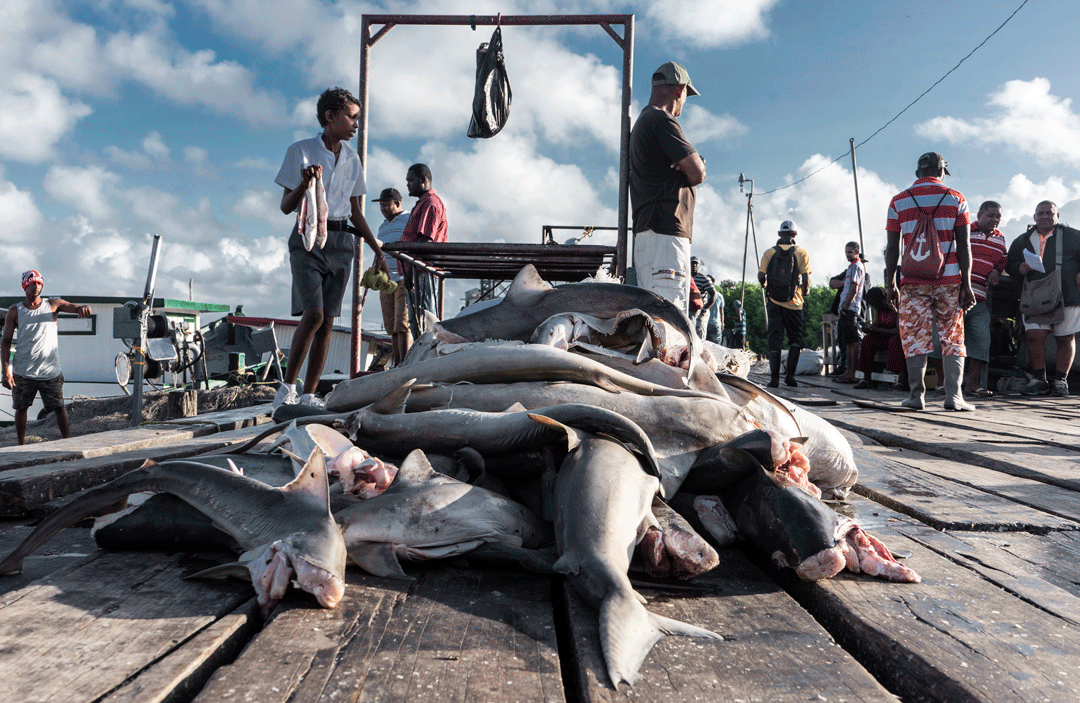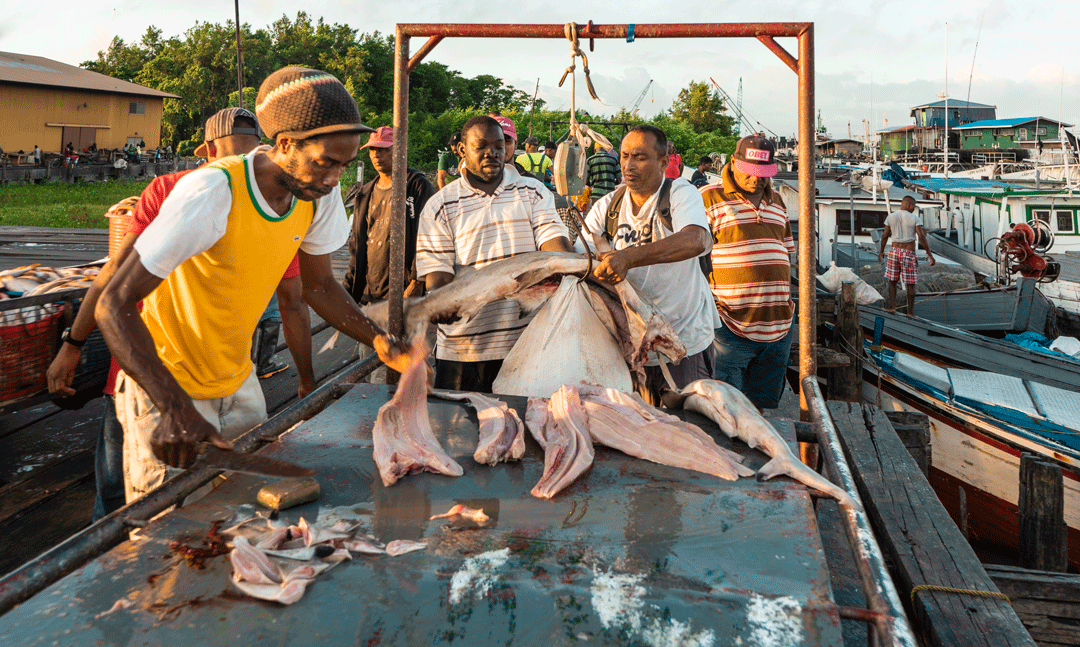CITES shark and ray listings: lessons learned from both ends of the supply chain
The international wildlife trade is one of the largest threats to biodiversity and tackling it has rapidly become a global conservation priority. Due to this rapid biodiversity loss, several multilateral environmental agreements have been created as part of the international legal framework to manage and protect biodiversity.
The Convention on International Trade in Endangered Species of Wild Flora and Fauna (CITES) was created in 1973 but came into force in 1975 to regulate the international trade of threatened species. CITES Parties (183 as of today) must adhere to the terms of the treaty by banning the commercial trade in Appendix I species and ensuring the sustainable, traceable, and legal trade in Appendix II species. To date, CITES Parties have listed over 35,000 plant and animal species in its appendices, with a large majority (96%) of these species listed in Appendix II.

Fishers offloading their catch. Photo © Diego Cardenosa
But what does this mean for the conservation of sharks and rays? Our findings from the shark fin retail markets survey in Hong Kong, the largest shark fin trade hub in the world, show that CITES-listed sharks remain among the most common species in the contemporary fin trade. Our research efforts in Hong Kong are evidence that once a species is listed on CITES, this is only the start of a long effort to achieve the desired effects of CITES Appendix II listings, which are a sustainable, traceable and legal trade in wildlife. As a consequence, Hong Kong has recently increased their inspection capacity and efficiency by implementing reliable and cost-effective visual and molecular identification tools. This has lead to the seizure of around 5 metric tons of shark fins since 2014! However, keep in mind that Hong Kong is only the end of the supply chain for the majority of the internationally traded shark fins.

At the start of the supply chain, fishing nations must ensure their CITES Appendix II exports have all the necessary permits in order to comply with the new CITES regulations. Unfortunately, many developing countries do not have the capacity and resources to manage their fisheries and monitor their shark and ray exportations. Moreover, some countries completely lack data of the species composition of their fisheries, hampering the decision-making process.

Photo © Diego Cardenosa
Our project “From the boat to the vote: basic fishery data to inform CITES authorities in Guyana”, which is supported by Save Our Seas Foundation, aims to tackle this issue and provide the minimum necessary information to aid the CITES authorities in Guyana to make informed international policy decisions. In the CITES Conference of the Parties in Geneva taking place tat the moment, 18 elasmobranch species will be proposed for listing on Appendix II, with a record number of sponsors in the history of the treaty. Of those, only the shortfin mako shark (Isurus oxyrinchus) and the longfin mako shark (Isurus paucus) inhabit Guyanese waters. However, our preliminary data suggest that these species are not present in the catches by their artisanal fishery fleet. This is good news since it means that if passed, the new CITES shark and ray listings would not have an impact on the local fishing communities of Guyana, which has been a major concern of the Guyanese authorities in previous years. This information has been delivered to the Guyanese authorities in order to allow them to make an informed decision towards these proposed shark and ray listings.

Photo © Diego Cardenosa
So, where does this leave us in terms of shark and ray conservation? Now that some commercially important shark species are listed on CITES Appendix II, we need to be even more vigilant in studying the trade at both ends of the supply chain to evaluate whether CITES listings have the desired effect and to help CITES Parties reach the desired goals. Therefore, significant investments in CITES implementation are required. At the end of the supply chain importers like Hong Kong need to conduct more inspections and apply all available tools to increase their efficiency. At the beginning of the supply chain, in the fishing nations like Guyana, we need better fisheries management and coordination with the CITES authorities in order to ensure legal and traceable international trade and to noticeably decrease fishing mortality.

Photo © Diego Cardenosa
